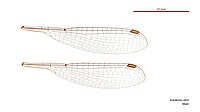
Indolestes is a genus of damselflies in the family Lestidae. Species of Indolestes can be medium-sized, dull coloured dragonflies. They are found from India through Asia, Australia and the Pacific.
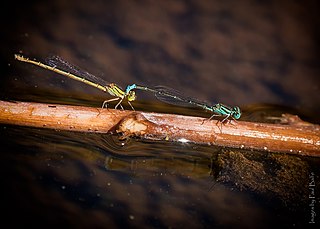
Austroagrion pindrina is a species of damselfly in the family Coenagrionidae, commonly known as a Pilbara billabongfly. It is a small damselfly; the male is blue and black. It is endemic to the Pilbara region of Western Australia, where it inhabits streams and still waters.

Eurysticta coolawanyah is a species of damselfly in the family Isostictidae, commonly known as a Pilbara pin. It is endemic to the Pilbara region in Western Australia, where it inhabits pools in rivers.
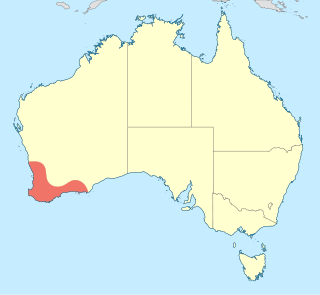
Austrolestes aleison is an Australian species of damselfly in the family Lestidae, commonly known as a western ringtail. It is endemic to south-western Australia, where it inhabits pools, ponds and lakes.

Austrolestes aridus is an Australian species of damselfly in the family Lestidae, commonly known as an inland ringtail. It is widespread across inland Australia, where it inhabits streams, pools, and ponds.

Austrolestes insularis is an Australian species of damselfly in the family Lestidae, commonly known as a northern ringtail. It is widespread across northern Australia, where it inhabits streams, pools, and ponds.

Austrolestes minjerriba is an Australian species of damselfly in the family Lestidae, commonly known as a dune ringtail. It is found in coastal areas of northern New South Wales and southern Queensland where it inhabits acidic dune lakes and swamps.
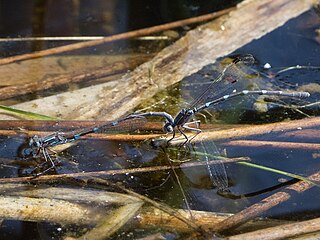
Austrolestes io is an Australian species of damselfly in the family Lestidae, commonly known as an iota ringtail. It has been found in both south-western Australia as well as south-eastern Australia where it inhabits pools, lakes and ponds.
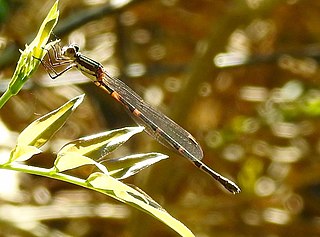
Austrolestes leda is an Australian species of damselfly in the family Lestidae, commonly known as a wandering ringtail. It is found across eastern Australia where it inhabits slow and still water.
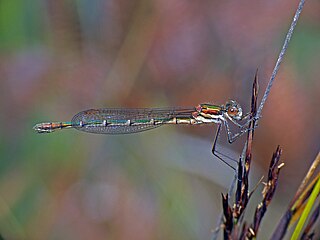
Austrolestes psyche is an Australian species of damselfly in the family Lestidae, commonly known as a cup ringtail. It is found in south-eastern Australia where it inhabits pools, lakes and swamps.
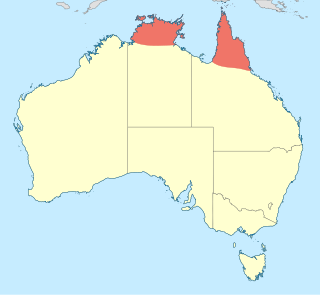
Indolestes alleni is a species of damselfly in the family Lestidae, commonly known as a small reedling. It is found across northern Australia where it inhabits lagoons, ponds and swamps.

Archiargiolestes parvulus is a species of Australian damselfly in the family Megapodagrionidae, commonly known as a midget flatwing. It is endemic to south-western Australia, where it inhabits streams, bogs and swamps.

Nososticta pilbara is a species of Australian damselfly in the family Platycnemididae, commonly known as a Pilbara threadtail. It has only been found in the Pilbara region of Western Australia, where it inhabits streams and pools.
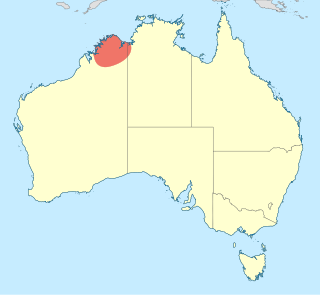
Nososticta kalumburu is a species of Australian damselfly in the family Platycnemididae, commonly known as a spot-winged threadtail. It has only been found in the Kimberley region of Western Australia, where it inhabits streams.

Nososticta koolpinyah is a species of Australian damselfly in the family Platycnemididae, commonly known as a Koolpinyah threadtail. It has only been found in the vicinity of Darwin and on Melville Island in Northern Territory, where it inhabits streams.

Nososticta koongarra is a species of Australian damselfly in the family Platycnemididae, commonly known as a citrine threadtail. It has only been found on the Arnhem Land escarpment in Northern Territory, where it inhabits streams.
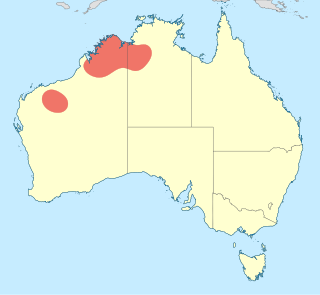
Nososticta liveringa is a species of Australian damselfly in the family Platycnemididae, commonly known as a malachite threadtail. It is endemic to northern Western Australia and western Northern Territory, where it inhabits streams and lagoons.

Nososticta taracumbi is a species of Australian damselfly in the family Platycnemididae, commonly known as a Melville Island threadtail. It is endemic to Melville Island, Northern Territory, where it inhabits streams.

Episynlestes intermedius is a species of Australian damselfly in the family Synlestidae, commonly known as an intermediate whitetip. It is endemic to the Eungella area of Queensland, where it inhabits streams.

Episynlestes cristatus is a species of Australian damselfly in the family Synlestidae, commonly known as a tropical whitetip. It is endemic to north-eastern Queensland, where it inhabits streams in rainforest.





